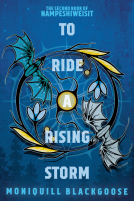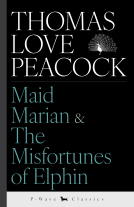
Samak the Ayyar
A Tale of Ancient Persia
by Translated by Freydoon Rassouli. Adapted by Jordan Mechner.
This title was previously available on NetGalley and is now archived.
Send NetGalley books directly to your Kindle or Kindle app
1
To read on a Kindle or Kindle app, please add kindle@netgalley.com as an approved email address to receive files in your Amazon account. Click here for step-by-step instructions.
2
Also find your Kindle email address within your Amazon account, and enter it here.
Pub Date Aug 03 2021 | Archive Date Nov 10 2021
Talking about this book? Use #SamaktheAyyar #NetGalley. More hashtag tips!
Description
Translated from the original Persian by Freydoon Rassouli and adapted by Prince of Persia creator Jordan Mechner, this timeless masterwork can now be enjoyed by English-speaking readers. A thrilling and suspenseful saga, Samak the Ayyar also offers a vivid portrait of Persia a thousand years ago. Within an epic quest narrative teeming with action and supernatural forces, it sheds light on the lives of ordinary people and their social worlds. This is the first complete English-language version of a treasure of world culture. The translation is grounded in the twelfth-century Persian text while paying homage to the dynamic culture of storytelling from which it arose.
Advance Praise
"This medieval Persian romance which enjoys enormous popularity in the Persian-speaking world is translated in a very attractive way, following the Persian technique of storytelling. Conveying the spirit of the original, Mechner and Rassouli are an exceptional match to carry out this difficult task. Samak the Ayyar will attract a broad readership with different cultural backgrounds."
—Asghar Seyed-Gohrab, author of Courtly Riddles: Enigmatic Embellishments in Early Persian Poetry
Available Editions
| EDITION | Other Format |
| ISBN | 9780231198790 |
| PRICE | $28.00 (USD) |
Average rating from 11 members
Featured Reviews
 Mary H, Reviewer
Mary H, Reviewer
A tale of fascination, about a princess, guarded by a witch nurse, and a Persian classic, about Samak the ayyar, and I share the hope that like samurai and ronin, ayyar will enter the dictionary as a word. Immensely entertaining and thank you netgalley and the publishers for giving me an advance copy of this book.
Samak the Ayyar promises a grand story of a wise and powerful warrior in a fictional ancient Persia, and instead delivers what amounts to the escapades of a silly cartoon a la Looney Toons. I think the biggest issue here is the way that the story is initially presented as a serious and deep story, when that's really not the case. It's also stated to be an all adaptation, and that doesn't seem to be the case either. Often reading like a straight translation, it doesn't seem that this story has been changed at all from the original to actually tell a coherent story. While the story is at points seemingly unintentionally funny, it's usually because the events are just so ridiculous, it's hard to believe that you've really just read them. If you completely turn off any sort of critical thinking, there are enjoyable parts, but too often the reader is taken on wild leaps of nonsensical 'plot' that it becomes extremely difficult to continue. I think the story would be much improved by going through an actual adaptation to make it a coherent story with updated wording, tweaked plot, and better written characters. The current product not only doesn't make sense, but also varies wildly in tone and frequently changes the focus with no warning. I would also strongly recommend a vastly different approach to marketing this book, as the current marketing does not at all convey what this story really is. While there are some sure moments of Shakespearean irony, ultimately, this is a silly story played for laughs that should absolutely, under no circumstances be taken seriously. Any thought at all on the character motivations, plot, setting, realism, etc. will immediately take you out of the story. This isn't a bad story, but it is extremely dated, very troubling at some points and just doesn't live up to the idea of a grand epic tale.
I do plan on posting a review for this on my YouTube channel, so please let me know what date I'm able to post this, and also let me know if any changes are planned after this feedback, as I'd certainly like to be aware of this.
This was... different.
A modern adaptation of a medieval Persian record of an epic oral tale, it follows the exploits of the title character, an ayyar - a kind of Persian ronin or ninja who also reminded me irresistibly of a D&D rogue (chaotic good alignment) or a swashbuckling hero of pulp fiction, not only in their ability to sneak into places and steal things but also because they are defenders of the common people, Robin Hood style, following a set of chivalric principles. There's a great deal of getting over walls by using a lasso, putting sleeping powder in people's wine, daring disguises, and sudden fights in dark places.
The context is that a prince of Persia (this was originally going to be a tie-in to a new version of the video game Prince of Persia) has set out to marry the princess of the land of Chin, and this, by a convoluted series of events which honestly I've already forgotten, leads to a war between Chin and the neighboring kingdom of Machin.
As originally oral stories tend to do, the narrative then falls into a pattern (with considerable variation of detail, to be fair) that goes something like this:
1. Someone gets captured or kidnapped.
2. Samak goes after them, and through a combination of cleverness and fortuitously meeting exactly the person he needs to help him, manages to retrieve them, often also capturing their captor and/or stealing some treasure in the process.
3. This often incurs some kind of obligation to the helper (it's a "Yes, but," in improv terms) which then becomes a plot thread leading on past the completion of the sequence.
4. The kings, whose armies are drawn up facing each other, hear about Samak's success, and one of them writes a letter to the other. The messenger is received, given food and drink and entertained with music and dancing girls, then the vizier reads the message aloud (apparently Persian or Persianesque kings didn't read their own mail in this period).
5. The king reacts to events by deciding that it is <i>on</i>.
6. Champions from the respective armies challenge each other to single combat, and one of them defeats multiple opponents, remaining triumphant at the end of the day.
The sequence then repeats. This is varied by ambushes in which parts of the army are wiped out while moving from place to place; the occasional actual battle of the opposing armies when the champion vs champion turns nasty; reinforcements coming up from one place or another; and a number of side plots, mostly involving Samak's quests to fulfil his obligations to the people who helped him. It isn't all just formulaic, but it's formulaic enough that I became weary of the formula by the end.
Because of all these threads, and the large number of characters - far too many of whom are introduced as deus ex machina when Samak suddenly needs a conveniently loyal ally who can help with exactly the problem he has - and because a central driving force of the plot is the various relationships within the royal families, it becomes a bit like a soap opera, only with more stabbing.
This is the first of several projected volumes, and it ends still with plenty of plot threads to resolve. Although I did enjoy it - especially initially, when the experience was fresh - between the constant convenient helpers, the repetitious formula, and the large cast of mostly one-note characters I don't feel especially tempted to read future volumes.
I realize that a medieval Persian story inevitably won't match up to modern narrative expectations, and it's not really fair to expect this to succeed in today's terms (though it could almost have been a pulp serial from the 1930s). As an adaptation of a medieval tale, as far as I could judge it's done well, and the copy editing is mostly very good (even in the pre-release version I got from Netgalley for review). I enjoyed it in a similar way to the way I enjoyed reading a version of the Chinese classic Journey to the West, and for similar trickster-hero-related reasons.
 S T, Reviewer
S T, Reviewer
I would like to thank the Freydoon Rassouli, Jordon Mechner, and Columbia University Press for kindly providing a electronic advanced readers copy of this book.
"Samak the Ayyar" is a special book. It is a modern English translation and adaptation of a series of episodes told by an unknown genius Persian storyteller around a thousand years ago that was thought to be lost to the world until manuscripts were discovered in the past century. This book contains 55 episodes over seven sections and spans well over 400 pages. These stories were enjoyable to read, but perhaps would be more impressive if heard live from a talented storyteller. In fact, rather than "binge reading" them, as I did, I suspect they may be best savored one episode at a time. They center around the trickster/spy/warrior/thief/friend-to-those-in-need Samak the Ayyar. These impressive ancient thriller stories take us back a thousand years to a Persia comprised of kings, princes, princesses, viziers, generals, warriors, heroes, villains, spies, assassins, thieves, merchants, nobles, witches, giants, and commoners. Topics include fatal combat, court intrigue, diplomacy, magic, romance, treasure, treachery, honor, and more. Since this book is a translation/adaptation of the first five of seven volumes, I look forward to reading more adventures of Samak the Ayyar.
 Reviewer 762493
Reviewer 762493
"Samak the Ayyar" isn't a page-turner, I'm afraid, but it does hold interest. The story is almost (if not over) 1000 years old, and it records a long tale of adventure that used to be transmitted orally - before it was recorded in writing and made into an illuminated manuscript.
In the modern world, it was published in Iran in the late 1960s, before going out of print. Now, the story is available in English for the first time.
The real-life people mentioned on the cover are artist Freydoon Rassouli, who provided the initial translation of the text; and Jordan Mechner, video game designer and screenwriter, who provided the editing. I was surprised to recognize both: I was introduced to Rassouli's art in the early 2000s by amateur artists who believed he was the bee's knees and wanted nothing more than to be him; and Jordan Mechner is the creator of the icon 1989 video game Prince of Persia.
I'm not entirely sure how much editing was done. Mechner mentioned some small changes made, some repetitions removed - but also a carefulness not to go down the slippery slope of changing too much.
But never mind the modern people behind the book, when the real question is: what's an ayyar?
An ayyar is a rogue of great skill - both a knight errant in search of adventure, ready to offer his services to those in need, and a stealthy, cunning master of disguise with a hundred tricks up his sleeve. And Samak is one of the best, both skill-wise, and personality-wise: a great friend to have, deeply honorable, always ready to help those in need.
The plot of the book would make a great video game. I'm not sure if that's why it appealed to Jordan Mechner, but I'm willing to bet that yes. It's action-packed... and, alas, repetitive. Characters are generally two-dimensional, and numerous enough that it's easy to lose track of them.
In short, a prince of Persia has a chance encounter with a beautiful woman in the desert, and he falls in love instantly. He finds out she's a princess from the kingdom of Chin, and she's guarded by her nurse, an evil witch who dooms all her suitors. Not dissuaded, the prince goes to Chin to win her hand and enlists the help of the local ayyars, especially the brilliant Samak.
While he manages to defeat the witch, he gets tangled up in the politics of Chin and Machin, as Chin's vizier plots to betray his own kingdom to the enemy to give the princess in marriage to his own... nephew? son? I'm sorry, I forget. And anyway, it's not that relevant long term.
This leads to a long war between Chin and Machin, and numerous adventures in which the princess, another princess, and various prisoners need to be rescued from the midst of enemy camps, from impenetrable fortresses, and from dungeons. And if nobody needs to be rescued, then someone boasts they can kidnap an important enemy and proceeds to do so.
There are armies in this book, but there are no descriptions of battles. Either hundreds or thousands of people are massacred in an ambush, or the armies face each other and a hero on one side rides out in front of the other soldiers and goads enemy heroes to fight him - then they proceed to duel, usually to the death, and in little detail (and what detail there is is usually repeated from battle to battle).
At one point, one can't help but wonder if the armies are there for purely decorative purposes, and if dungeons wouldn't be better served by revolving doors, as they would prevent the untimely deaths of numerous guards.
I'm sure that the repetition works better in oral retellings, as the storyteller can revert to stock situations and descriptions, and as the audience might differ. In writing, it gets tedious. The book spans four years, and I swear I could feel every one of them.
But there's a certain fascination here: Samak is charming, and the way he weaves in and out of enemy territory is varied enough. He makes friends (some quite conveniently, when he needs help), and tries to stop them from being reckless, then goes into danger after them and saves them. The overarching plot is somewhat random, but it holds up.
And the most charming bit was, I believe, when a princess I'd half-forgotten about reappeared in the plot by sending a scathing letter reproaching her side of the war for forgetting she existed, when she desperately needed rescuing from a side character who had likewise vanished long before - apparently, when kidnapping her. Ah, to be a fly on the wall when the original storyteller probably realized that he'd forgotten about her, and most of the audience had, too, but turned that into yet another way to further the plot. What a master of his craft.
Stylistically, this resembles a fairy tale, in that it's very simply told. Unfortunately, that gets a bit old after 400 pages - and, presumably, four times again that, as "Samak the Ayyar" is one of five volumes. The simplicity and the large amount of twists, turns and general action per chapter mean that this reads very much like a soap opera (as another reviewer also observed).
I think the story might stick with me for a while. It's definitely not one of my favorites, and I wouldn't rush to read the next volumes, but I would eventually be curious to know what happens next. It feels like the sort of story that could spring others in our age, capturing the imagination of those who would love to explore parts of it more deeply.
Many thanks to NetGalley and Columbia University Press for providing an ARC in exchange for an honest review.
So I’ll be honest this book didn’t flow as well as I would have liked it too. I’m assuming it’s because it’s a translation and the integrity of the story was a priority to preserve.
That being said, I really enjoyed the story itself. I thought the content was fascinating and there was enough twists and turns to keep me interested. I found myself invested in some of the characters and continuing on because I really wanted to see what happened to them.
The very fact that this text has made its way to English-speaking readers is exciting and is a win for a more cross-cultural literacy. The character of Samak, described in the introduction as a sort of Robin Hood-type character in the context of 1001 Nights, is archetypal and timeless. His exploits and quests are as well. Translator Freydoon Rassouli and Prince of Persia game and film adapter Jordan Mechner have produced a clear, readable story that should be accessible across age and education levels.
Since in-depth references and notes are not included, we are unable to make too many points of critique. Best case scenario, academics and other storyline adapters will pick up Samak and give us a body of translations to fill out our understanding and bring us closer to the 12th century epic.
Thank you to Freydoon Rassouli, Jordan Mechner, Columbia University Press, and NetGalley for an Advance Reader Copy in exchange for an honest review.
 Reviewer 2883
Reviewer 2883
Samak the Ayyar sound like it would be a thrilling and wonderful introduction to a beloved folk hero character from a different culture. I was on board to be wowed and entertained. But the sad reality is that while I can easily see this being a fabulous story if told orally to a captivated audience by a master story teller, unfortunately it's not quite ready to be read as a book.
The introduction states that in the translation and preparation for publication, duplications were removed, tweaks were made to improve flow and continuity, bits of dialog and action were introduced to clear up issues and correct errors that would doubtless not be noticed while listening. Yeah, well there's just not enough streamlining as the repetition after even just 100 pages was mind numbing. I can see the need for this if you're listening over the course of several evenings but it doesn't work if you're reading it.
I guess the story is supposed to focus on the action and not the (rather stock and one dimensional) characters. Keeping them straight in my head was a chore and more work than I feel I ought to put into a book. The "just in time" remembrance of convenient friends exactly when Samak needs help or the discovery of hidden passages (gotta have those in a adventure tale) to rescue prisoners (and there are a ton of them) began to get comical. Of course the prince is the most handsome man in the kingdom while the princess is so exquisitely beautiful that men instantly fall in love with her. The vizier is evil while the shah is more a bumbling fool. And more guards die than is believable. Seriously, how does the palace keep enough staff interested in working there with the terrible death problem they have?
This book might work better if read in small doses rather than large gulps and perhaps I'll eventually go back and try that but for now, reluctantly I think I'm done here.
Readers who liked this book also liked:
Dr. David Guyer & Ian Keldoulis
Business, Leadership, Finance, Health, Mind & Body, Science
Thomas Love Peacock
General Fiction (Adult), Historical Fiction, Humor & Satire


















